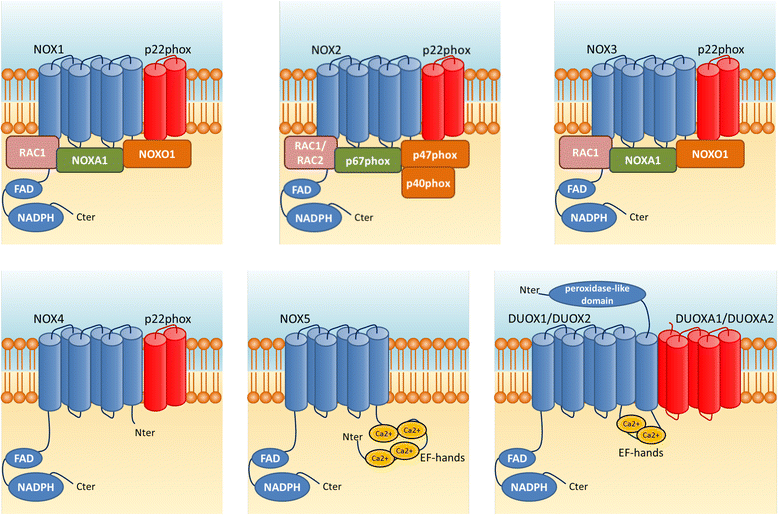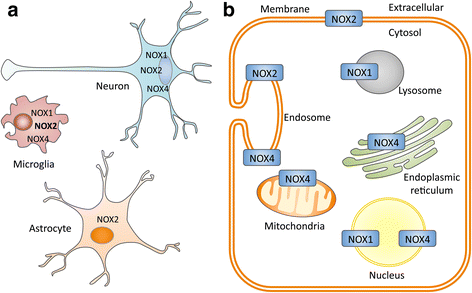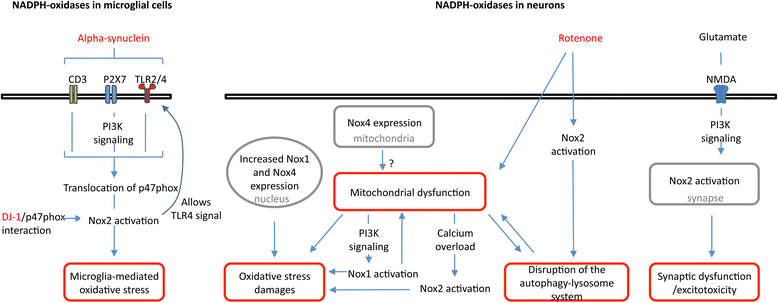NADPH oxidases in Parkinson's disease: a systematic review
- PMID: 29132391
- PMCID: PMC5683583
- DOI: 10.1186/s13024-017-0225-5
NADPH oxidases in Parkinson's disease: a systematic review
Abstract
Parkinson's disease (PD) is a progressive movement neurodegenerative disease associated with a loss of dopaminergic neurons in the substantia nigra of the brain. Oxidative stress, a condition that occurs due to imbalance in oxidant and antioxidant status, is thought to play an important role in dopaminergic neurotoxicity. Nicotinamide adenine dinucleotide phosphate (NADPH) oxidases are multi-subunit enzymatic complexes that generate reactive oxygen species as their primary function. Increased immunoreactivities for the NADPH oxidases catalytic subunits Nox1, Nox2 and Nox4 have been reported in the brain of PD patients. Furthermore, knockout or genetic inactivation of NADPH oxidases exert a neuroprotective effect and reduce detrimental aspects of pathology in experimental models of the disease. However, the connections between NADPH oxidases and the biological processes believed to contribute to neuronal death are not well known. This review provides a comprehensive summary of our current understanding about expression and physiological function of NADPH oxidases in neurons, microglia and astrocytes and their pathophysiological roles in PD. It summarizes the findings supporting the role of both microglial and neuronal NADPH oxidases in cellular disturbances associated with PD such as neuroinflammation, alpha-synuclein accumulation, mitochondrial and synaptic dysfunction or disruption of the autophagy-lysosome system. Furthermore, this review highlights different steps that are essential for NADPH oxidases enzymatic activity and pinpoints major obstacles to overcome for the development of effective NADPH oxidases inhibitors for PD.
Keywords: Alpha-synuclein; Microglia; Mitochondria; Neurodegenerative disorders; Oxidative stress; Synaptic plasticity.
Conflict of interest statement
Ethics approval and consent to participate
Not applicable.
Consent for publication
Not applicable.
Competing interests
The authors declare that they have no competing interests.
Publisher’s Note
Springer Nature remains neutral with regard to jurisdictional claims in published maps and institutional affiliations.
Figures




References
-
- Jang A, Lee HJ, Suk JE, Jung JW, Kim KP, Lee SJ. Non-classical exocytosis of alpha-synuclein is sensitive to folding states and promoted under stress conditions. J Neurochem. 2010;113:1263–74. - PubMed
Publication types
MeSH terms
Substances
Grants and funding
LinkOut - more resources
Full Text Sources
Other Literature Sources
Medical
Miscellaneous

